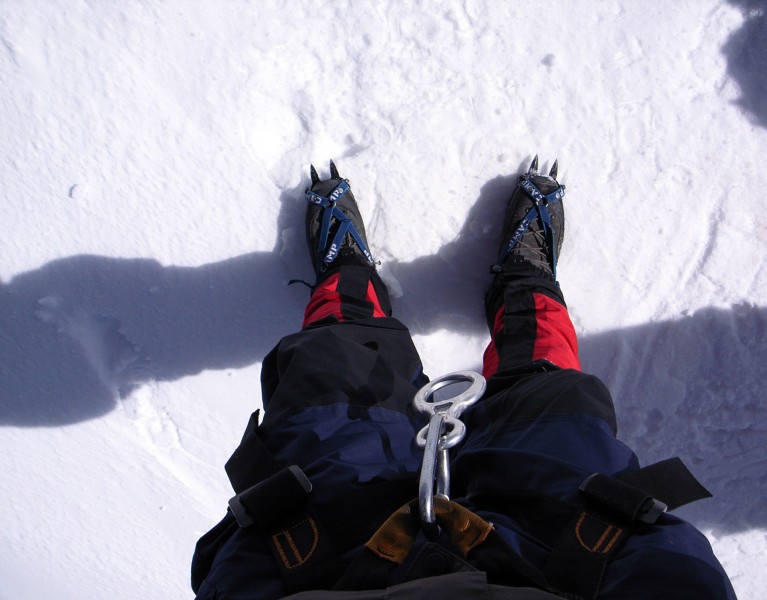
Winter Gear Guide: How to Use and Maintain Gaiters
Table of Contents [Show]
Making plans for an exciting winter adventure is easy; the tough part is gathering and remembering all the required gear for cold weather trips. Winter brings turbulent conditions that are unpredictable and out of our control, so being prepared for the snow, rain and harsh winds make for a comfortable journey. There’s nothing worse than freezing snow, slush or water seeping into your waterproof boots to ruin your hiking, skiing or snowboarding adventure. Gaiters are a piece of gear that should always be on your winter packing list. But what are gaiters and why would you need them?
Check out KÜHL's Essential Hiking Checklist.
What Are Gaiters?
Gaiters are a guard, or shield, that help protect your footwear, pants or neck from disagreeable weather conditions and unexpected terrain. They cover any gaps between your pants and boots or your neck and coat. Gaiters can help keep your legs, feet and neck warm and dry, for a more comfortable winter experience. They protect the most vulnerable areas of your body and help protect them from the harsh winter elements.
Originally, gaiters were made with materials like leather or canvas. Now, most are made with synthetic cloth like polyester for the legs or merino wool for the neck. Leg gaiters resemble cut-off sleeves and have attachments that wrap around your ankle and hook under the heel of your boot. They come in all different shapes and sizes to accommodate anything from extreme sports to a simple walk in the woods. Gaiters are a great addition to your winter gear, and they are usually inexpensive, lightweight and durable.
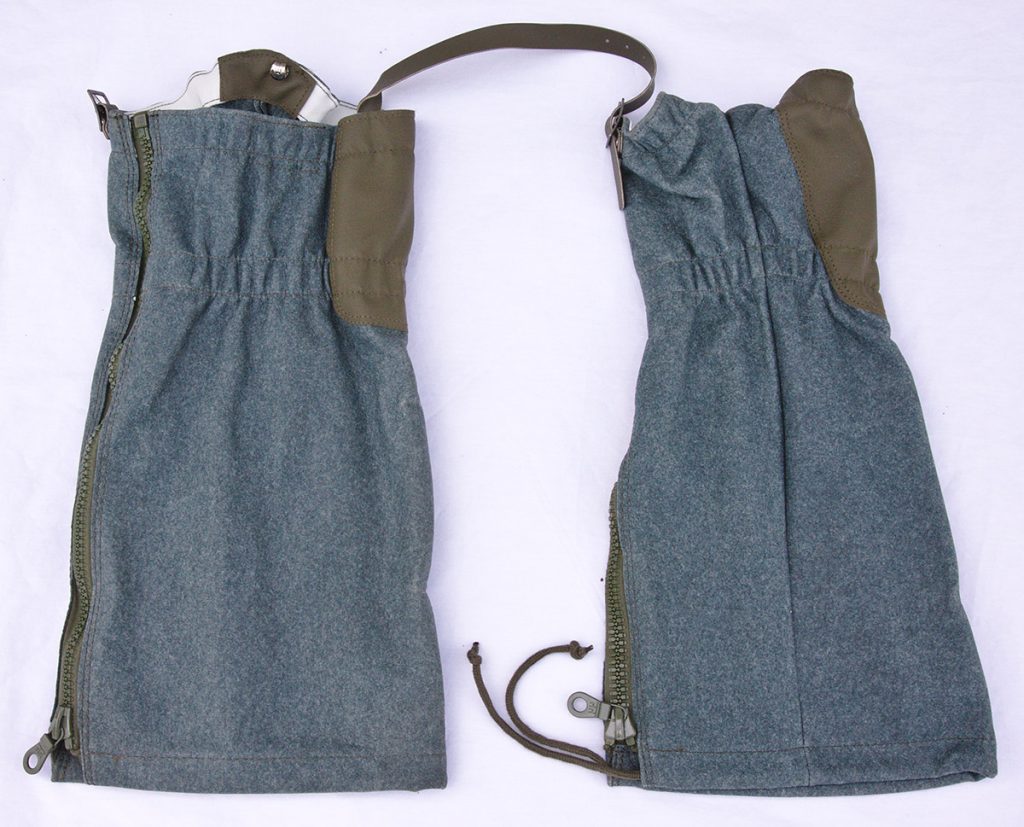
Why Gaiters?
Strapping on a pair of gaiters before long hikes, especially when traveling through streams, muddy trails or snow, provide an extra layer of protection. No matter how waterproof your boots are, there’s still a high chance that water will seep through. The job of the gaiter is to seal the ankle area where most water will enter your boot. With gaiters, you can traverse winter routes without any worry of getting your feet wet or your boots full of snow.
The pros don’t stop there. Gaiters also protect your pants when hiking through thick brush or wet areas. They are perfect to wear on sunny winter days when you don’t want to put on heavy snow pants. Even on warmer days, when you might want to wear shorts, it’s a good idea to pack a pair of gaiters just in case you need added protection for your legs. With gaiters, you’ll never have to stop to untie your boots and extract pesky pebbles that snuck in. Gaiters have you covered … literally!
Gaiter Heights
The height of your gaiters depends on what kind of activities you have planned. The appropriate gaiter height depends mostly on how much protection you need. Generally, for use in snow or when you’re heading off-trail, you want a taller gaiter for more coverage. Shorter gaiters are good for trail running and light hiking. It’s worth noting that taller gaiters are generally hotter than shorter ones because they restrict airflow more - keep this in mind as you think about what conditions you’re likely to use gaiters in.
Leg gaiters come in three main sizes:
- Short or Over-the-Ankle: Great for keeping pebbles or other debris out of boots while hiking on trails.
- Mid-Calf: Great for less-extreme conditions to keep debris and water out.
- Long or Knee-High: Designed for more extreme or rugged conditions. Perfect for deep snow, wet brush and bad weather.

Types of Gaiters
Just as the height of the leg gaiter depends on your activity, so does the type.
Ankle Gaiters
These are the most common type of gaiter. They offer an extra layer of protection for your ankles and the area between your shoes or boots and your pants. Ankle gaiters are optimal for weather conditions that are fair and not too wet. They are ideal for hiking in the sun, trail running or rock climbing.
Trail Gaiters
These are usually made with a lightweight, breathable material, and go to your shins or just below the knees. Trail gaiters are great for hiking on wet trails or winter activities such as cross-country skiing.
Mountaineering Gaiters
Sometimes called expedition gaiters, mountaineering gaiters reach all the way up to your knees for added protection while traveling through mounds of snow. Think about purchasing these if you’ll be alpine climbing or going on a multiple-day winter backpacking journey.
Snow Gaiters
These are best suited for harsh snowy conditions and come with an extension to properly fit over your snow boots. Snow gaiters are a must for skiing or snowboarding down a snow-packed mountain. Many ski/snow pants often have snow gaiters built into them.
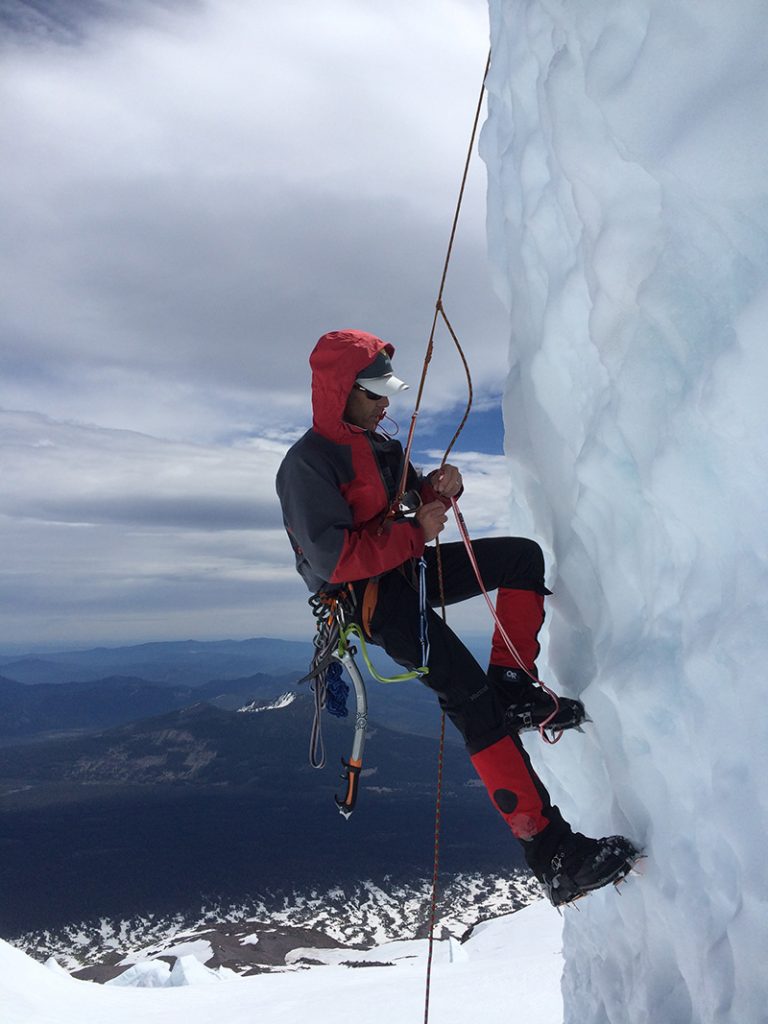
How to Wear Leg Gaiters
Make sure your gaiters are suited for your activity. For example, mountaineering gaiters are tall and will keep your legs warm, so you don’t want to wear these for trail running.
- The first step is to get your boots or shoes on.
- Next, step into the gaiter with the opening at the front of your leg and the fabric at the back.
- The instep straps and buckles should go underneath your boots toward the outside of your feet. If you adjust them to the inside of your feet, you may hit the buckles while you’re walking.
- Adjust the instep straps so that they fit snugly around the bottom of your boots.
- At the bottom of the gaiters, you’ll find a little metal hook to hook on to your laces. Make sure the laces are tied tight.
- Seal the gaiters shut with the velcro lining, and adjust the top with the elastic bands so it fits nicely around your leg.
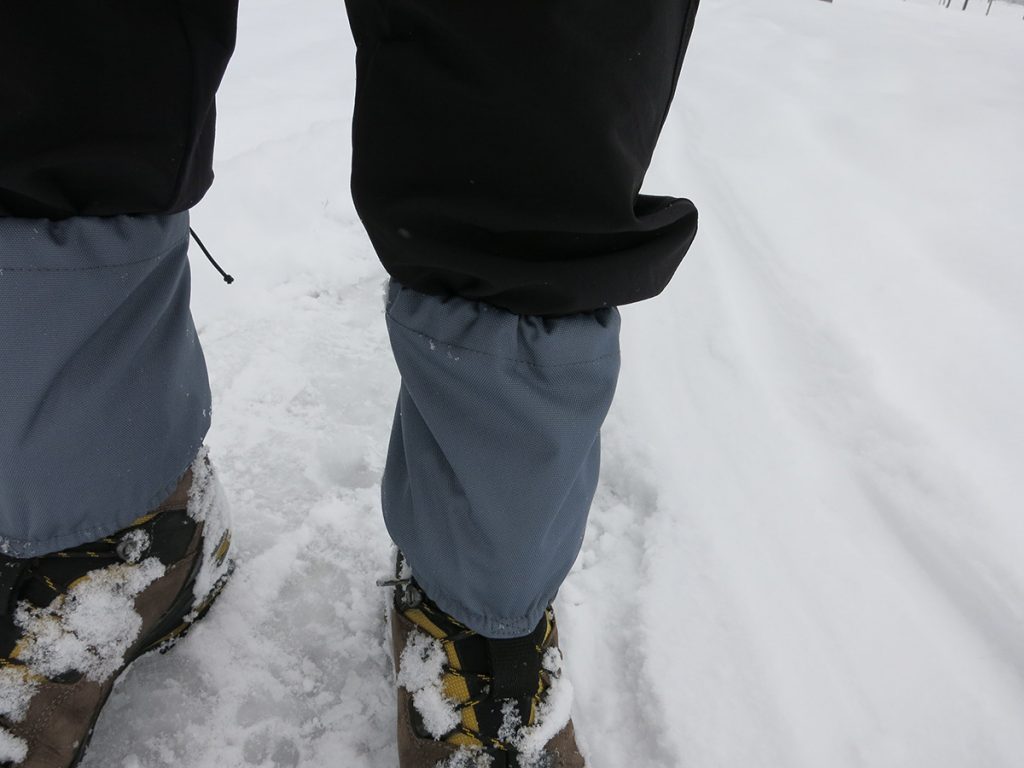
Neck Gaiters
Just like leg gaiters, neck gaiters resemble a cut-off sleeve, wide enough to accommodate fitting over your head and around your neck. The neck gaiter will be your best friend on the slopes. This wonderful tube of fabric protects your neck and face from ice cold winds as you race down your favorite hills. It also keeps you protected from harsh, bitter winds on a winter hike. Simply slide the neck gaiter over your head, onto your neck and adjust the elastic band over your ears for protection.
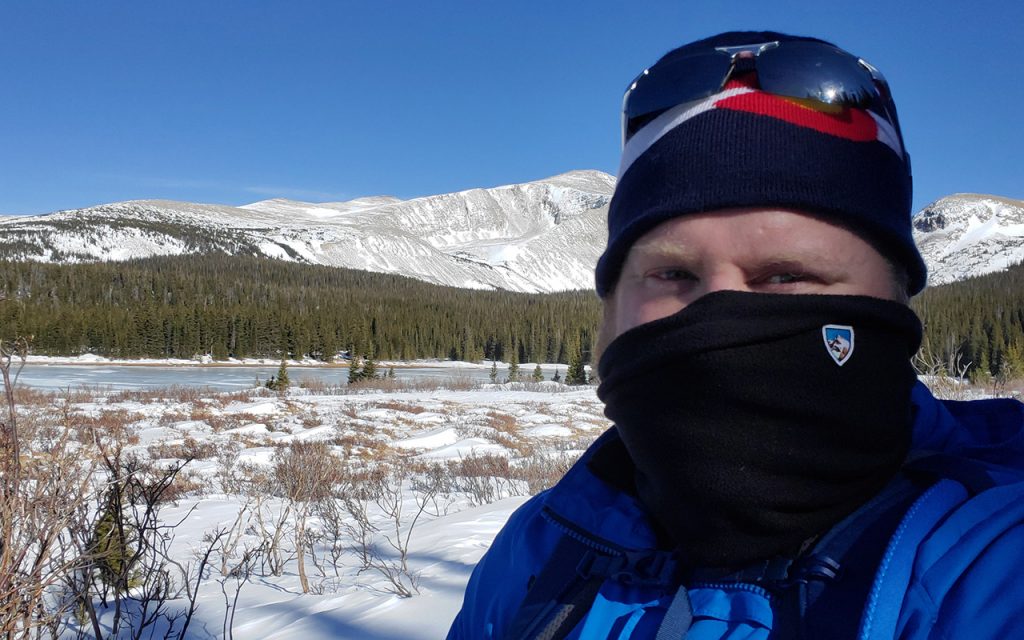
The KÜHL Neck Gaiter provides perfect protection from all the harsh winter elements. Made with micro-fleece, it’s extremely soft, dries quickly and wicks sweat away. It’s wind and water resistant and keeps you warm and comfortable despite the cold weather. The KÜHL Merino™ Neck Gaiter is made with Merino wool and is incredibly lightweight, soft and warm. With added moisture wicking material, it deters build up of sweat on the inside or snow on the outside.
You can easily roll up gaiters and carry them in your jacket pocket for any outdoor adventure. Gaiters are perfect for high-elevation hikes; snowboarding, skiing or ice skating; or even if you’re taking your dog for a walk on a blustery winter day. Forget bulky and inconvenient scarves, the neck gaiter is the ultimate winter wear.
How to Maintain Gaiters
With a little love and care, your gaiters will stay in good shape for years to come. Leg gaiters are pretty easy to take care of, but here are some tips for keeping them in top notch shape:
- After removing, rinse with clean water.
- With a small brush, remove any dirt with mild liquid soap. Use an old toothbrush when caring for the velcro to keep straps from sticking together.
- Air dry gaiters for a few hours, then properly store them in a cool, dry place away from the sun. Close the zippers and close the velcro straps.
- Machine washing or drying can damage velcro straps, so it’s best to wash gaiters by hand. If you end up with any tears or punctures, use a patch instead of trying to sew it.
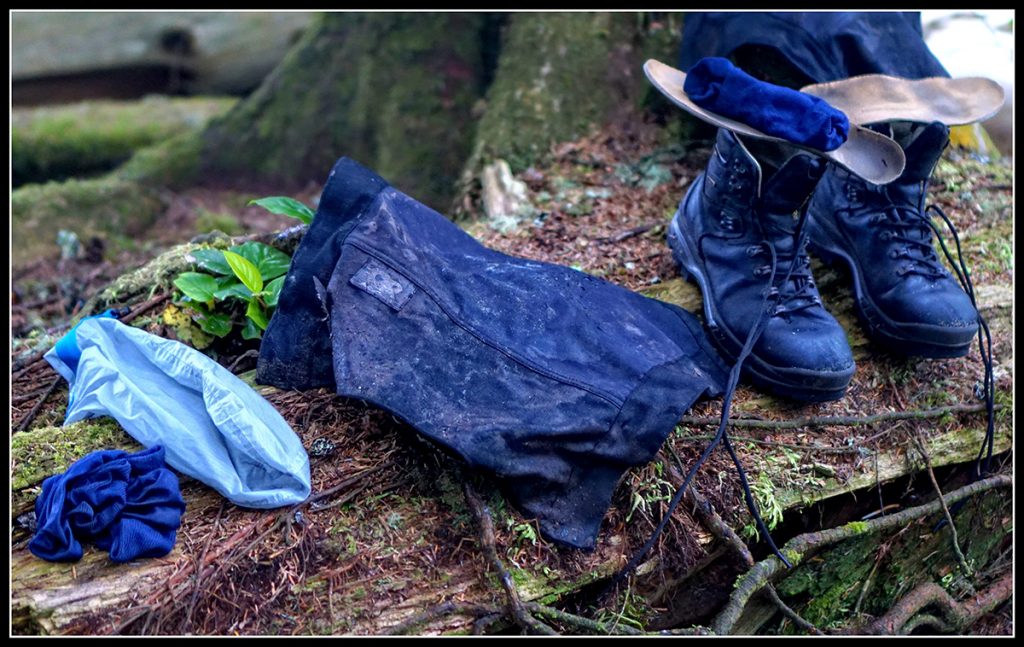
If you have a fleece or Merino wool neck gaiter, you can wash it in a machine on a gentle cycle with warm or cool water and mild liquid soap. Avoid using hot water or bleach. Hot water may shrink the wool and bleach will damage the wool fibers, reducing the ability to manage moisture and regulate body temperature. You can tumble-dry Merino wool, but it’s recommended to air dry to further extend the life of your neck gaiter.
Get Yourself Some Gaiters
Gaiters should be your go-to gear item this winter. They keep your feet and neck protected from snow and icy winds, shielding those exposed areas of the body that we sometimes forget about. They make hiking in the snow and skiing down black diamonds that much more enjoyable. Get yourself some gaiters this winter and adventure on!
Featured Image - Snow gaiter, single-layered boots & crampon by Chen Zhao.


